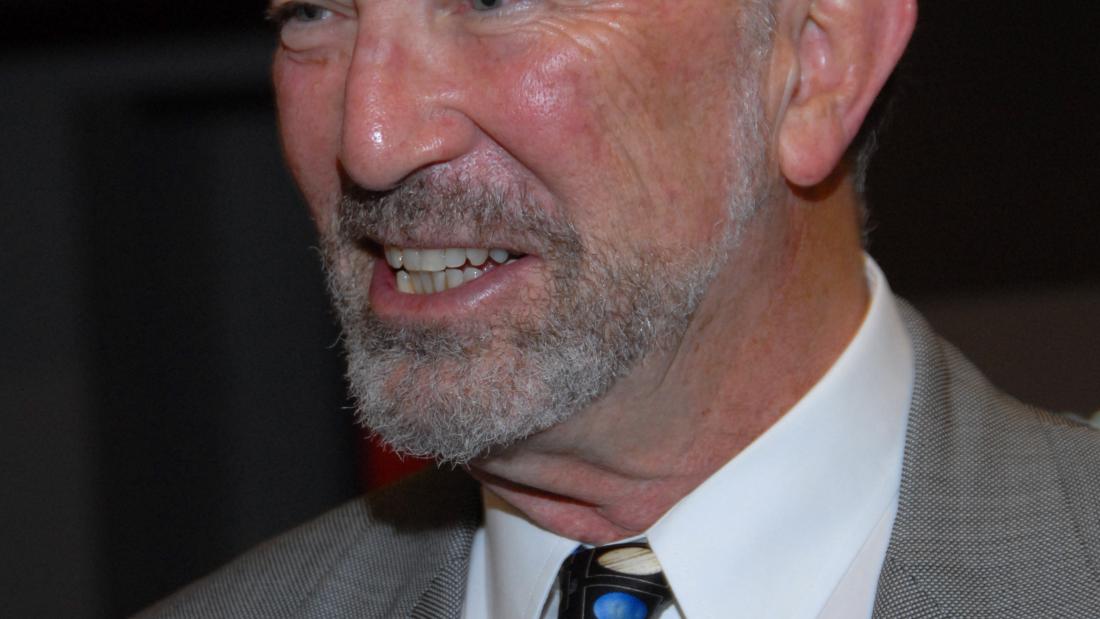
BIOS: Dr. Jeffrey Kirsch & Dr. Steven Snyder
BIOS
Jeffrey W. Kirsch, Ph.D. In 1983, Dr. Kirsch became the Executive Director of the Reuben H. Fleet Science Center located in San Diego’s beautiful Balboa Park. Under his leadership the institution has quintupled its membership (to 14,000 families), doubled its physical size (in 1998 to 95,000 square feet) and is recognized as a major contributor to the use of IMAX® films in science museums and inquiry-based science education. He is a participant in many citywide activities and the Fleet has become a leader in informal science education and science literacy for the region. Fleet education programs now reach more than 100,000 students per year, and the Fleet has been awarded a series of multi-year grants from the State of California to train San Diego elementary school teachers in inquiry-based methods for science education, which has led to the establishment of the Fleet Inquiry Institute to train teachers with professional development programs based on inquiry methodology. In 2004, the Fleet also launched an early childhood education exhibition (Kid City) to explore ways to improve the opportunities for parents to understand the importance of pre-K education for their youngest family members. Dr. Kirsch is especially interested in educational environments that promote problem-solving skills and teamwork and that recognize self-esteem as a vital influence on science understanding by adults as well as children.
Dr. Kirsch has been Executive Producer for seven IMAX productions, and consulting producer or advisor on seven other IMAX films. His most recent production work was as Executive Producer for Tornado Alley (2011). He is very interested in the transformation of science and science communications due to the advent of computer graphics and new digital techniques for data visualization, and he continues to work on a number of IMAX projects based on these new technologies. Under his guidance, the Fleet gained international prominence for collaborative productions with other producers and IMAX theaters, thereby adding to the Fleet’s stature as the world’s first IMAX Dome Theater when it was installed in 1973. From 2008 to 2011, with help from staff and a community task force of electronic engineers, the original Dome was replaced with a high-contrast, seamless Giant Dome screen that greatly improved picture quality and the visitor experience. This was followed by the installation of the first digital GSX™ system by Global Immersion, Ltd. It employs four SONY SRXT-420 projectors to present digital full-dome planetarium shows. Now called the Eugene Heikoff and Marilyn Jacobs Heikoff Dome Theater, it is the first Giant Dome Theater venue to share a digital planetarium with an IMAX motion picture theater.
Dr. Kirsch has played a major role in the Giant Screen industry. He served on many committees of the International Space Theater Consortium (ISTC), becoming Chairman in 1997-98. When ISTC merged with another professional organization to create the Giant Screen Cinema Association (GSCA) in 2002, he served a number of terms on the Board and as Chairman of the Board for 2012.
After overseeing production of Chronos (1985), a groundbreaking, award-winning large format film, he was one of six Founders of the Museum Film Network (MFN), which eventually became an international association of fifteen museums. He served as Chairman of the MFN for terms totaling over ten years. The MFN developed and sponsored more than a half dozen IMAX science films for the worldwide community of giant screen theaters. In 2001, he was proud to receive the Founders Award from IMAX, Inc. for individuals who have made a major contribution to the arts and sciences of IMAX films.
When the MFN ceased production work, Dr. Kirsch became the founding President of the Giant Dome Theater Consortium (GDTC) in 2008. GDTC consists of seven Giant Dome theaters at major institutions in the United States. Their first project was Tornado Alley (2011), produced by Graphic Films, Ltd. and Giant Screen Films, Inc. GDTC’s participation marked the first test of an alternative business model for institutions to invest in Giant Dome Film projects based on the establishment of a revolving fund for producing IMAX films for Dome theaters. GDTC is now looking for its next project.
In San Diego, Dr. Kirsch was a mayoral appointee to the Balboa Park Committee and has been very active in the Balboa Park Cultural Partnership (BPCP). He served as founding President in 2002, and later for two other terms, the last ending in 2012. BPCP helps each of 21 cultural organizations in San Diego’s famous Balboa Park to achieve its full potential through collaborations with the other Park institutions and to advocate for their collective benefit.
Dr. Kirsch received his B.S.E. in Aeronautical Engineering at Princeton University in 1962, M.S.A.E. in Aerospace Engineering at University of Southern California in 1963, and a Ph.D.A.E. in Aerospace Engineering at University of Southern California in 1969. His first career path was in the physical sciences, rocketry and aerospace engineering. Ten years in aerospace research led to many publications and included two patents for low-speed aerodynamics devices. His deep interest in science communications eventually led him into a career in public broadcasting as Executive Producer and Director of the KPBS-TV Science Center in San Diego. Over a nine-year period, Dr. Kirsch was responsible for science-oriented program production and led efforts that resulted in nationwide acclaim for many award-winning TV documentaries.
Dr. Kirsch has benefited from scholarships funded by NASA and grants from the National Science Foundation. He will be forever grateful for that crucial support, and he is proud to have served on numerous review panels for the Informal Science Education program at National Science Foundation.
Steven Snyder, Ph.D. comes to the Fleet from The Franklin Institute in Philadelphia, where he served as Vice President of Exhibit and Program Development. There he was responsible for redefining the direction and processes for the development and implementation of all exhibit, theater and public programs for a 180+ year old institution and in so doing transforming the existing museum into a more dynamic, relevant, educational experience. As a member of senior leadership, he helped to shape the strategic direction and chart a new course for the organization. Dr. Snyder conceived of and led the development of a new educational direction for the organization that will drive the future direction of conceptualization and implementation of all exhibit, program and theatrical offerings. He managed an extensive staff, including designers, developers, interpreters, evaluators and scientists, while directing over $5M in annual operations and $2M in annual capital projects. Dr. Snyder developed new experiences and products to increase attendance and revenue while maintaining the integrity of the organization’s educational mission, including over 80,000 square feet of new exhibitions and programs, and served as a key public spokesperson for the organization.
At Science City/The Kansas City Museum in Kansas City, MO, Dr. Snyder served as Director of Science, then Director of Attraction Development, and played a key role in helping a small regional history museum expand to encompass a new science center located in a restored 850,000-square-foot train station, an existing regional historic site. Through careful management, he changed staff perceptions about roles and possibilities for the organization, its reach and mission. He led the development of all exhibits, programs and theatrical offerings, and managed a highly diverse team with backgrounds in education, science, history, collections, entertainment/theater and graphic design. While overseeing the development and management of budgets and strategic planning, he also developed new techniques to attract new (and retain old) audiences and developed relations (professional, sponsorship and donor) with community and business leaders.
Dr. Snyder was a 2010 Noyce Leadership Fellow and, as the Director of the Science Theater Outreach project, led the group to receive the 1993 AAAS Award for Public Understanding of Science and Technology. He has served on the Program Advisory Board, Eastern State Penitentiary Historic Site, ASTC Program Planning Committee and the President’s House Task Force. He is asked to speak regularly at national and international conferences and workshops and has published the results of both scientific and educational work. Recent publications include “Augmented reality for interpretive and experiential learning” (S.L. Snyder and K. Elinich), Proceedings from EVA 2010: Electronic Visualization and the Arts, London, England, 2010. As the Principle Investigator for several federally grant-funded projects, he developed projects that developed augmented reality software for interactive exhibition (ARIEL, NSF), developed neuroscience curriculum for K–12 students (Neuroscience in Your World, NIH Blueprint for Neuroscience), created community-based urban astronomy programs (City Skies: Linking Neighborhoods through Urban Astronomy, NASA CPSMP) and engaged urban audiences in climate change mitigation and adaptation (Climate and Urban Systems Partnership, CCEP Phase II) among others. Dr. Snyder graduated from Carnegie Mellon University in Pittsburgh and took his Ph.D. in Physics in 1996 at Michigan State University in East Lansing, Michigan.
